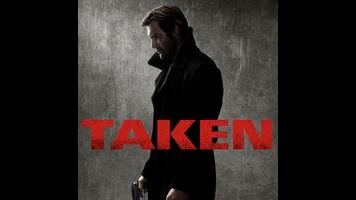Taken, the French-made thriller that put Liam Neeson on a path to unlikely action stardom, did not beg for a sequel (much less two), and yet here we are, nearly a decade later, with a Taken TV series. How exactly does NBC, the network where every paint-by-numbers procedural gets spun off into a half dozen more of the same, hope to stretch this ultimate reactionary wish-fulfillment fantasy for sad, divorced dads into even a single season of television? You already know the answer: By ditching the whole father-daughter thing and turning it into a paint-by-numbers network TV procedural about a shadowy national security unit (aren’t they all?), a sort of Homeland: Criminal Intent. Created by Alex Cary, a veteran of both Homeland and Homeland co-creator Howard Gordon’s short-lived TNT series Legends, the new series resembles any number of indifferently watchable post-24 earpiece shows. But Taken it ain’t.
Of course, any attempt to adapt Taken without its towering Irish star is a fool’s errand. For one thing, no one remembers the name of Neeson’s middle-aged, overprotective ex-CIA operative; it’s Bryan Mills, but within that part of the cultural imagination stirred by the original Luc Besson-produced hit, it’s “Liam Neeson.” NBC’s Taken gives the role of a thirtysomething Mills to Clive Standen, whose qualifications consist of above-average height and a name that could belong to a Neeson stand-in in a pissy Hollywood roman à clef. Neeson is a commanding actor whose investment in Taken and in subsequent action-thrillers like Non-Stop, Unknown, and The Grey have turned the latter-day Charles Bronson phase of his career into a cycle of death-obsessed star texts. Standen is a guy you may remember from TV. He was on Vikings. Under dim light, he sometimes looks like Will Forte.
The pilot (directed by Alex Graves) does a halfway decent job of evoking the bigger star’s image, right down to the wardrobe, which puts Standen in a succession of Neeson-esque sweaters and pea coats. But by the second episode, the series gives up on drawing any (inevitably unflattering) comparisons to its source material, with which it ultimately shares little except a title and a character name. Though Standen hails from Northern Ireland (like Neeson), he plays the character with a straight American accent, rather than an Americanized brogue. This Mills is still a former CIA operative, but instead of eking out a living on security gigs and living in a bachelor-ific stucco apartment building in the San Fernando Valley, he joins a secret team run by Christina Hart (Jennifer Beals) out of a loft office that looks like a co-working space for graphic designers.
There is a good chance you have seen all of this before: doors of surveillance vans being thrown open; click-clacking computer keyboards; characters saying “We’ve got company” (or this show’s preferred variation, “We’ve got tourists”) while looking at camera feeds. But maybe that’s the point, because Taken wastes little time settling into a drinking-game-ready formula that it can repeat ad nauseam, should the ratings hold: take a shot every time a location along Toronto’s Queen Street West or Yonge Street is used as an unconvincing stand-in for an American city center; another whenever Hart’s team tricks a bad guy into spilling the beans; and two every time an imperiled teenage girl serves as a plot point or Mills punches a goon so hard that he tumbles over a railing.
As an action series, Taken is pathologically generic: a collection of service corridors and staircases for Mills to skulk around while he takes out gunmen with silenced pistols, with the odd ventilation shaft, subway tunnel, or parking structure added in for variety. Though subsequent episodes represent a step up from the lumbering first half of the pilot (for whatever reason, the second half is both better shot and better directed), the nature of the network TV schedule precludes the level of stylization and technical ambition necessary for a memorable action set-piece. In the grand tradition of direct-to-video, three of the four episodes available for review feature action scenes in derelict industrial buildings.
Procedurals subsist on personalities, and for now, Taken has none: Mills is a vacuum with fists and a dead sister to avenge, while the character of Hart amounts to “serious politics woman with occasional glasses.” The rest of their team could be recast with different actors for every episode without anyone noticing. It is possible that they were. Perhaps the question isn’t whether the world needed a Taken series that includes absolutely none of the things that made the film popular, but whether it needed a rote cloak-and-dagger TV show that isn’t pulpy, twisty, or stylish enough to be addicting cultural junk-food. In the third episode, “Off Side,” co-writen by Jarhead author Anthony Swofford, Mills and company are tasked with a foiling a false-flag Islamist terrorist attack in Washington, D.C., orchestrated by a villain who believes the White House is too soft on “the threat of Islam.” In the age of Trump, this kind of geopolitical skullduggery seems quaint.


 Keep scrolling for more great stories from A.V. Club.
Keep scrolling for more great stories from A.V. Club.